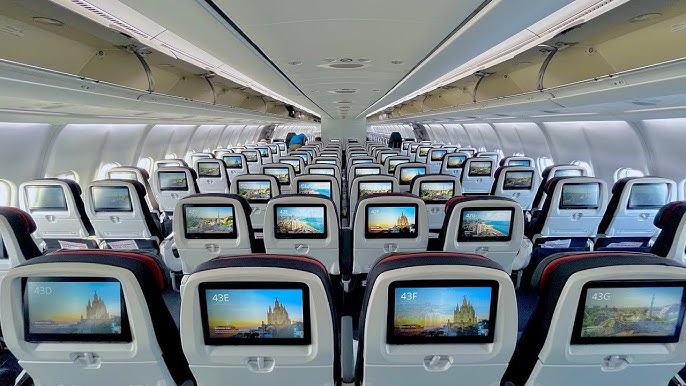Introduction
People are going to the Global Excel Summit in London. There are many Excel enthusiasts and influencers going to this conference from your city.
Before they book their flight, they want to know who will be on which flight, and book an appropriate seat. Some are free allocation, and some are premium. Then they will book the flight on a particular day and time.
We need a system to manage this.
All users have Excel, of course. So, we want this solution to be built with Excel. Who knows (?) the best solution might even be showcased at the conference.
This is a thought experiment. You don’t need to build an actual working solution. But you will need to have thought through the implications of your choices and explain how you selected it.
You are given the seating plan. And the prices for premium seats.
This is a typical seating plan for an Airbus 330-300. A simplified Excel grid will be supplied. We’ll only fly Economy Class/Coach.

Level 1
Design a solution which uses Excel features that are not power features from the last 20 years.
Level 2
Show how the solution is improved with appropriate use of Excel’s power features from the last 20 years.
Level 3
Improve the solution so that it will work unattended and in real-time.
Level 4
At this level, we demonstrate a ‘benchmark’ working solution. Evaluate this solution against your solution. Explain the key differences.
Level 5
Some seat allocations have a premium price. Currently these prices are static. We need the prices to change by a set number of days-before-travel.
Level 6
We now want to introduce dynamic pricing. So, now the prices will be set by supply and demand.
Level 7
The final level is, we want to introduce dynamic bidding for the seats on either side of key influencers (eg. Oz du Soleil) who are are on the flight. Highest bidder gets the seat.




Add comment